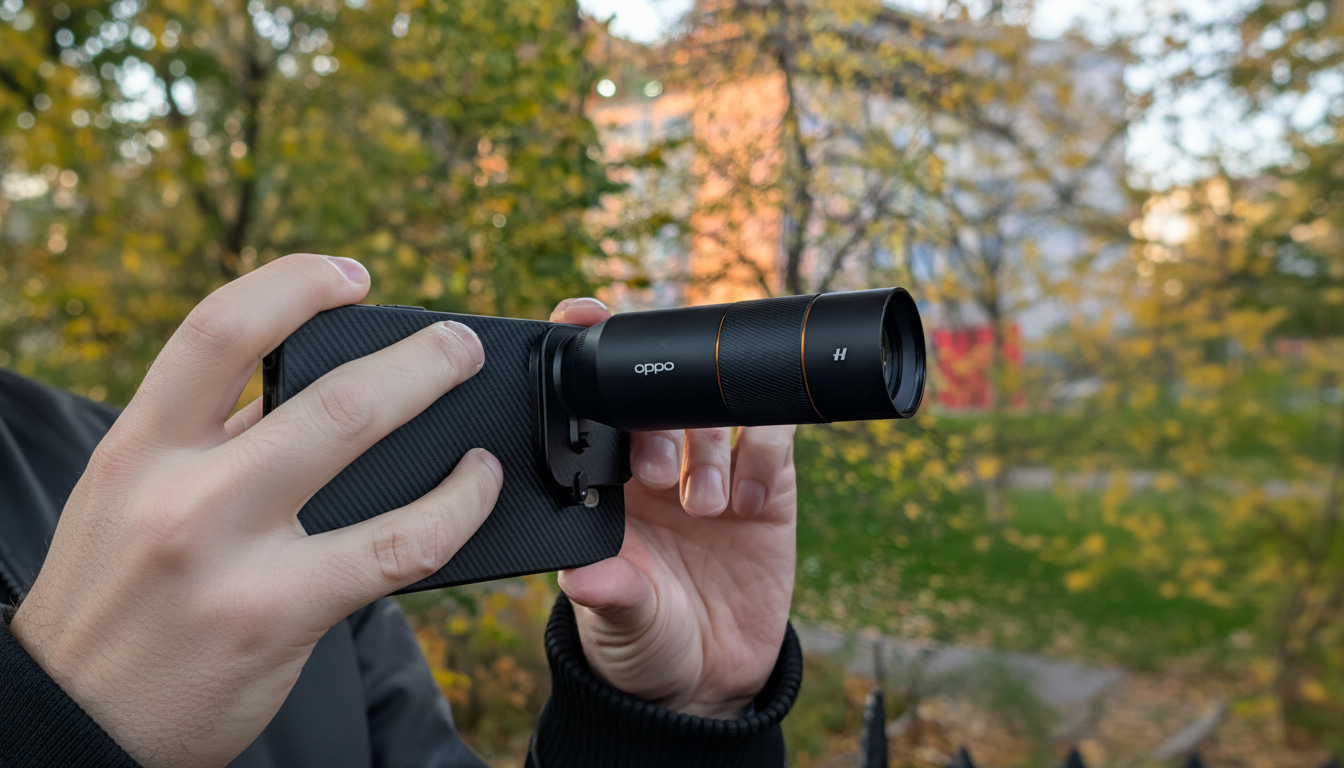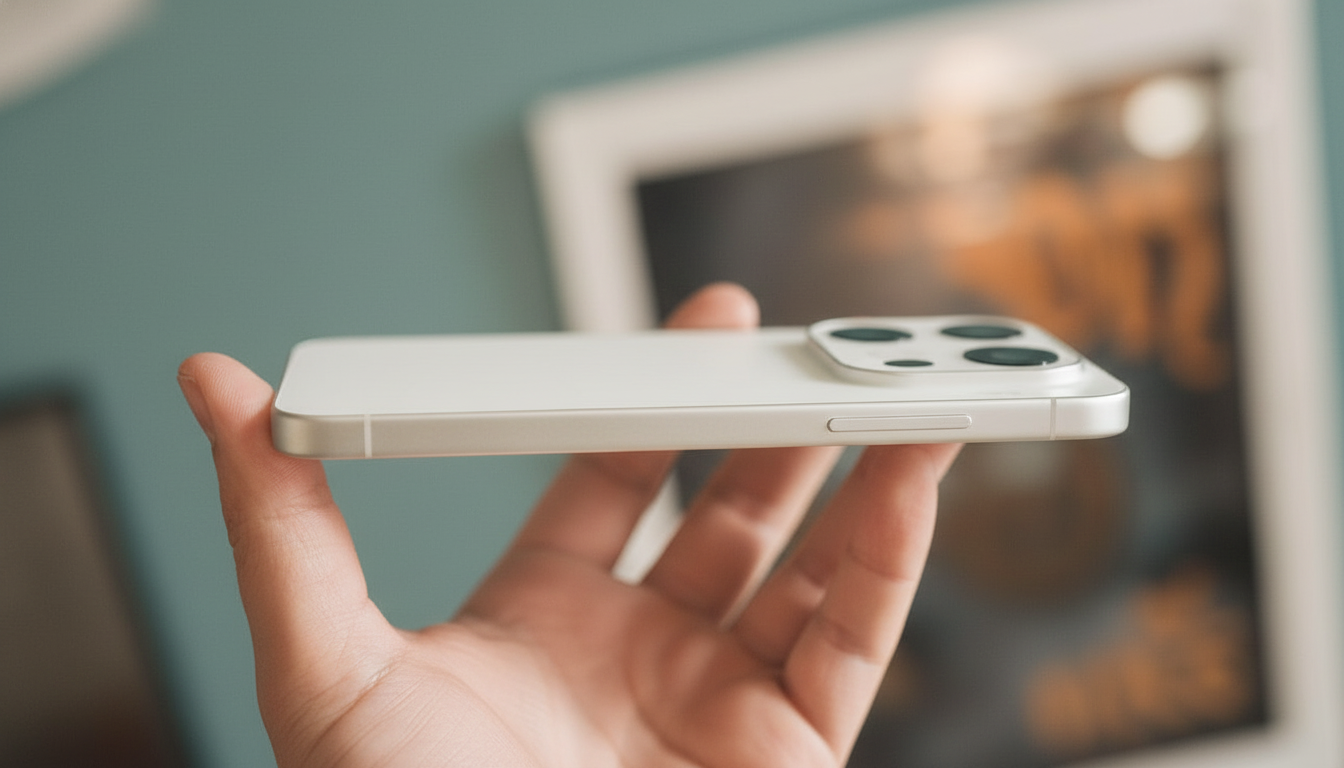OPPO’s latest flagship has gone global, and it arrives with a headlining feature designed for serious zoom. The Find X9 Pro pairs a 200MP periscope camera with an external telephoto extender branded by Hasselblad that gives the phone an optical reach of around 10x — a new take on smartphone photography at long focal lengths.
A 200MP Periscope Constructed For Extenders
The Find X9 Pro’s main telephoto is a 200MP 3x periscope employing Samsung’s ISOCELL HP5 (1/1.56-inch) with an f/2.1 aperture and macro focusing to 10cm. OPPO claims the sensor can output 13.2x lossless resolution zoom and 6x at 50MP, relying on oversampling to maintain detail over longer distances. A separate 2MP “true color” companion cam on the back keeps colors accurate.

The twist is the extra Hasselblad telephoto lens for stills (a $199 add-on that will become available later this spring, and which I’ll get my hands on to test out). It clips on over the 200MP and multiplies the focal length by 3.25x, to roughly a 230mm equivalent, or somewhere between 9.6x–10x native reach. It is for stage performances, wildlife or motorsport—situations where hybrid zoom can fall short—that having genuine optical extension really counts. It’s a niche accessory, but moves the needle for mobile shooters struggling to keep their shutter speeds up and ISO in check with distance and lighting working against them.
The rest of the camera stack is no slouch either. The main 50MP LYT-828 sensor (1/1.28-inch, f/1.5) has support for real-time triple exposure for a wider-looking dynamic range — OPPO quotes up to 17 stops — while the 50MP ultrawide comes from Samsung’s JN1. Video features comprise 4K at 120fps with Dolby Vision across main and telephoto, a stage mode designed for far subjects, XPAN framing as well as Hasselblad Master Mode for color and manual control.
Large Battery Capacity and Fast Charging Support
That means the Find X9 Pro gets a 7,500mAh cell under its hood — relatively unique for what is considered a mainstream flagship. OPPO is aiming for the traditional two-day demand thanks to 80W wired charging and 50W wireless. The battery will also hold at least 80% effective capacity after five years, the company additionally touts. OPPO doesn’t list a cycle count, but OnePlus has recently said that it’s making the same five-year promise on about 1,350 cycles — if OPPO is in the same neighborhood, you could expect industry-leading battery health.
Cutting through inefficient and heat-generating computing will be key to getting there. The latest MediaTek flagship silicon and OPPO’s charging algorithms have to walk a fine line between speed — we’re not exactly living in the dark ages, despite press-release writers’ dramatic prose — and heat to minimize faster degradation — the trade-off being one that battery researchers at schools like Tsinghua University or outfits like Battery University have previously dived into. Real-world endurance tests in the weeks to come will be the best proof point.
Display, Build, And Features Suited To Flagship Life
The 6.78-inch OLED “ROKR” screen runs at 120Hz with a resolution of 1.5K and hits advertised peaks of 3,600 nits for HDR highlights. The high-brights mode actually goes all the way up to 1,800 nits and the panel will dim down to just a single nit for dark-room reading. An ultrasonic fingerprint reader now sits in place of the previous optical one for improved reliability with wet digits.

The chassis features a matte glass back and metal frame with IP68/69 ingress protection. It comes with Wi‑Fi 7 and Bluetooth 6.0, as well as quad microphones. The alert slider is gone from the OPPO A series but there’s a new Snap Key that is by default assigned to a novel AI Mind Space feature, plus the Pro model gets its own dedicated Quick Button for shutter release — very handy when shooting at 230mm and you need a steady hand.
Dimensity Performance And Long-Term Software Support
Both the Find X9 Pro and its regular counterpart are powered by MediaTek’s Dimensity 9500. The phones come running ColorOS 16 atop Android 16 and promise five major Android updates and six years of security patches. That makes OPPO one of the best out there when it comes to year-over-year longevity, drawing closer to Google and Samsung’s longest extended support windows which have revised consumer expectations for flagship software life cycles.
Standard Find X9 Also Makes An Appearance
Prefer a cheaper option that doesn’t sacrifice the zoom? The standard Find X9 offers a 7,025mAh battery, that same 6.59-inch 120Hz OLED with equivalent brightness claims and a trio of 50MP cams: the LYT-808 main (f/1.6), a 3x periscope on the LYT-600 (f/2.6) and an ultrawide built on the JN5. Most of the Pro’s imaging software — things like 50MP-by-default stills, 4K/120 video, Motion Photos and stage mode — translate.
Pricing, Availability, And Hasselblad Extender Details
The Find X9 Pro costs €1,299 (RRP) for a 16GB/512GB model in Silk White or Titanium Charcoal. The base Find X9 model is priced at €999 (about $1,000) for 12GB of RAM and 256GB storage with your choice of Space Black, Titanium Gray or Velvet Red. OPPO has not shared market availability of the Hasselblad telephoto extender or its pricing yet, but this is going to be a differentiation factor for users who are looking forward to truly long-range photography.
In the flagship landscape, where the camera packages determine hierarchy, OPPO’s gamble is plain — make a good base periscope and put optical reach modularity on top. If it performs as advertised, the Find X9 Pro could easily become the hands-down pick for concertgoers and sideline shooters yearning for more than a software zoom.

